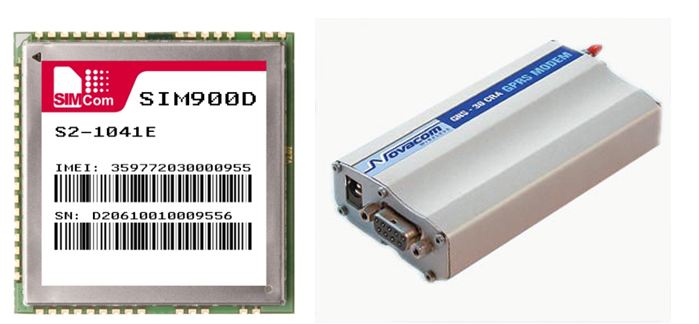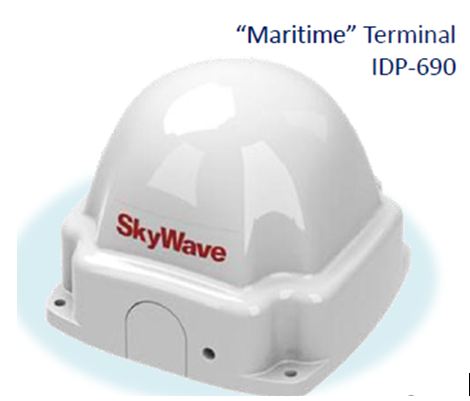Satellite system equipment AutoTracker. Side unit - that under the hood. GPRS and other data transfer methods
In previous posts we talked about the fact that telemetry data from the onboard unit is transmitted to the dispatch server via GSM networks. They have a developed structure in all regions of the Russian Federation, high reliability and low cost of information transfer. Data transmission is carried out primarily through GPRS. But in emergency situations, at the time of setting up, activating or remotely installing the unit, data can be transmitted via SMS.
Russian Navigation Technologies is an official partner of several cellular operators, and offers the most advantageous tariffs for the transmission of telematic information from the mobile segment to the stationary one in the AutoTracker system, however, the user can choose any suitable operator himself and a tariff plan with GPRS support. On average, 1 car cost of traffic is 70-80 rubles per month (if the unit is not roaming and does not actively use SMS). To save money on cellular communication, there is a version of the unit with 2 SIM cards (to use the most favorable tariffs depending on the region), and you can also use special tariffs for international roaming.
A GSM modem is responsible for sending and receiving data in the onboard unit.

Embedded and external GSM modems
For configuration, voice communication and SMS, on the server side, data is also received by a GSM modem connected to the server via USB or COM port. But the main part of the data transmitted over the GPRS channel is transmitted to the server via TCP or UDP
But what if there is no GSM connection? In this case, AutoTracker provides alternative work options, depending on the needs of the customer and the specific situation.
In case of short-term loss of GSM communication (for example, up to 2 hours) or when the connection is not critical for several days, information is recorded in the internal memory of the unit. The minimum number of events (or waypoints) that can be recorded in the onboard AutoTracker unit's memory is 3600. This allows you to record offline for approximately 2 weeks. Although the amount of memory and, respectively, waypoints depends on the specific modification of the block. In the latest models, this is 2 megabytes of internal memory and more than 80 thousand waypoints, which is rarely required. When GPRS appears, all accumulated data is sent to the server.
Sometimes the equipment works for a very long time in remote areas, in areas where there is no cellular connection. At the same time, the efficiency of the data is not critical, and from time to time a helicopter with supplies arrives in these remote areas, or a tanker or other equipment arrives. In this case, there is a variant of work, when all the onboard units are equipped with radio modems or WiFi modules. They also write data to the internal memory, and when a vehicle from the “mainland” arrives at a remote object, it has an onboard unit (or just an employee with a laptop), which collects data on the work of all the machines via WiFi or radio channel. Upon arrival at the “base”, the collected data is dropped to the server. This solution is not very efficient, but it is inexpensive and allows you to get detailed data on the operation of equipment.

A special person regularly arrives at logging and “merges” on the laptop all the data on the operation of equipment
But there are situations when it is necessary to transmit data as quickly as possible, and even a short-term loss of GSM should not affect communication. This is relevant in critical processes, collection, security, transport in high-risk areas, etc. Then satellite communication comes to the rescue. Currently, Inmarsat satellite communication is implemented in the AutoTracker system. Inmarsat has 2 main data services - Isat M2M and IsatData Pro. The first of them is notable for cheaper equipment but high prices for communication, besides, it has serious limitations on the size of a message (up to 25.5 bytes for sending in the double sending mode). The standard Isat M2M message weighs 10.5 bytes. IsatData Pro is a more modern service that works with 4th generation satellites and allows you to transfer more data for less money. The size of the message to send is limited to 6400 bytes in size, to receive 10 KB, which is significantly better than Isat M2M.

Satellite terminal operating in IsatData Pro standard
A satellite modem is connected to the onboard unit, and in case of loss of GSM communication, the unit starts transmitting data via satellite. In general, satellite communications are much more expensive than cellular, but they have recently been rapidly becoming cheaper, so in the future we can expect an expansion of the range of services, an increase in the number of subscribers and the emergence of new M2M solutions using it. In general, the topic of satellite communications is very interesting, and we plan to give it a separate post in the future.
Russian Navigation Technologies is an official partner of several cellular operators, and offers the most advantageous tariffs for the transmission of telematic information from the mobile segment to the stationary one in the AutoTracker system, however, the user can choose any suitable operator himself and a tariff plan with GPRS support. On average, 1 car cost of traffic is 70-80 rubles per month (if the unit is not roaming and does not actively use SMS). To save money on cellular communication, there is a version of the unit with 2 SIM cards (to use the most favorable tariffs depending on the region), and you can also use special tariffs for international roaming.
A GSM modem is responsible for sending and receiving data in the onboard unit.

Embedded and external GSM modems
For configuration, voice communication and SMS, on the server side, data is also received by a GSM modem connected to the server via USB or COM port. But the main part of the data transmitted over the GPRS channel is transmitted to the server via TCP or UDP
But what if there is no GSM connection? In this case, AutoTracker provides alternative work options, depending on the needs of the customer and the specific situation.
In case of short-term loss of GSM communication (for example, up to 2 hours) or when the connection is not critical for several days, information is recorded in the internal memory of the unit. The minimum number of events (or waypoints) that can be recorded in the onboard AutoTracker unit's memory is 3600. This allows you to record offline for approximately 2 weeks. Although the amount of memory and, respectively, waypoints depends on the specific modification of the block. In the latest models, this is 2 megabytes of internal memory and more than 80 thousand waypoints, which is rarely required. When GPRS appears, all accumulated data is sent to the server.
Sometimes the equipment works for a very long time in remote areas, in areas where there is no cellular connection. At the same time, the efficiency of the data is not critical, and from time to time a helicopter with supplies arrives in these remote areas, or a tanker or other equipment arrives. In this case, there is a variant of work, when all the onboard units are equipped with radio modems or WiFi modules. They also write data to the internal memory, and when a vehicle from the “mainland” arrives at a remote object, it has an onboard unit (or just an employee with a laptop), which collects data on the work of all the machines via WiFi or radio channel. Upon arrival at the “base”, the collected data is dropped to the server. This solution is not very efficient, but it is inexpensive and allows you to get detailed data on the operation of equipment.

A special person regularly arrives at logging and “merges” on the laptop all the data on the operation of equipment
But there are situations when it is necessary to transmit data as quickly as possible, and even a short-term loss of GSM should not affect communication. This is relevant in critical processes, collection, security, transport in high-risk areas, etc. Then satellite communication comes to the rescue. Currently, Inmarsat satellite communication is implemented in the AutoTracker system. Inmarsat has 2 main data services - Isat M2M and IsatData Pro. The first of them is notable for cheaper equipment but high prices for communication, besides, it has serious limitations on the size of a message (up to 25.5 bytes for sending in the double sending mode). The standard Isat M2M message weighs 10.5 bytes. IsatData Pro is a more modern service that works with 4th generation satellites and allows you to transfer more data for less money. The size of the message to send is limited to 6400 bytes in size, to receive 10 KB, which is significantly better than Isat M2M.

Satellite terminal operating in IsatData Pro standard
A satellite modem is connected to the onboard unit, and in case of loss of GSM communication, the unit starts transmitting data via satellite. In general, satellite communications are much more expensive than cellular, but they have recently been rapidly becoming cheaper, so in the future we can expect an expansion of the range of services, an increase in the number of subscribers and the emergence of new M2M solutions using it. In general, the topic of satellite communications is very interesting, and we plan to give it a separate post in the future.
')
Source: https://habr.com/ru/post/150923/
All Articles